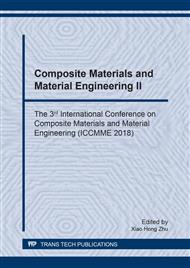p.235
p.243
p.249
p.257
p.263
p.269
p.273
p.277
p.283
Influence of Curing Pressure on Unconfined Compressive Strength of Cemented Clay
Abstract:
The soil-cement columns are generally installed and cured in the soft clay layers under confining pressure. The strength of the soil-cement columns may be influenced by confining pressure during curing period. In this study, the main objective was to study the influence of curing pressure on unconfined compressive strength of cemented clay. A series of unconfined compression tests was performed on a cement admixed clay sample cured under pressure values of 0 kPa (atmospheric pressure), 25kPa, 50kPa and 100 kPa using a typical unconfined compression equipment. The test samples with values of cement content of 0.5, 1.0 and 2.0 percent were cured for 28 days.The stress-strain curves obtained from all tests show a peak value of stress. The unconfined compressive strength or peak stress obviously increased with increasing cement content for all curing pressure conditions. It can be observed that the strength of samples gradually increased with curing pressure for cement content of 0.5 percent. For cement contents of 1.0 and 2.0 percent, the strengths of samples cured under pressures of 25 kPa dramatically increased from the strength of samples cured without pressure (0 kPa), however, the strengths of samples for curing pressures of 25, 50 and 100 kPa were not clearly different.
Info:
Periodical:
Pages:
263-268
Citation:
Online since:
August 2018
Authors:
Price:
Сopyright:
© 2018 Trans Tech Publications Ltd. All Rights Reserved
Share:
Citation:


